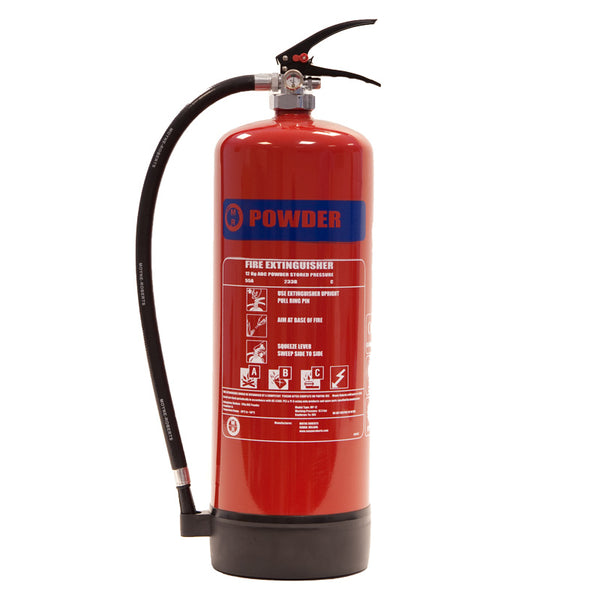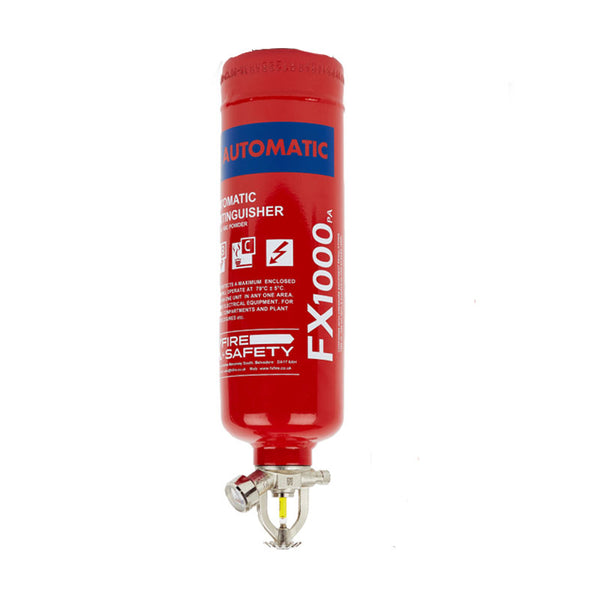Powder extinguishers also known as Dry Chemical and Dry Powder fire extinguishers. What is possibly not widely appreciated is that Dry Powder is a catch all description for a group of fire extinguishers that use different types of chemicals each of which have different fire fighting capabilities. To simply purchase one of the many dry powder extinguishers available at discount prices all over the web simply based on the generic name could be a costly mistake if you choose the wrong Dry Powder.
The commonest misconception is that a multipurpose ABC Dry Powder for use on Class A, B and C fires is somehow just an upgraded BC Powder extinguishers.

A class BC extinguisher contains Sodium Bicarbonate and came into use in the late 1920’s to tackle flammable liquids and gases now called Class B and Class C fire respectively. They could also be described as the first Carbon Dioxide extinguisher as in the heat of the fire the Sodium Bicarbonate undergoes a chemical reaction that produces a cloud of carbon dioxide that drives off the oxygen smothering the flames.
Just like actual Co2 extinguishers it is not reliably effective on Class A fires involving solid combustibles as once the gas dissipates and the air oxygen returns the retained heat in the fuel can cause re-ignition. Flammable liquids and pressurised flammable gases retain little heat so do not re-ignite.
ABC fire extinguishers on the other hand contain ammonium sulphate. They are effective on solid combustibles because the heat of the fire causes the powdered chemical to melt even at a relatively low temperature. The effect is to smother the fire and form a continuous barrier layer preventing oxygen reaching the fuel.
Generally a BC rated extinguisher will outperform a multipurpose ABC of the same size on flammable liquids and gases.
Another fire extinguisher powder to look out for is Potassium Bicarbonate which has double the fire fighting capacity of sodium bicarbonate on Class B flammable liquids. Potassium Bicarbonate and Urea Complex is better known, in the UK at least as Monnex Dry Powder. Its superior performance makes it the extinguisher of choice for the oil and gas industry and interestingly in motor sports such as Formula 1 due to its ability to knock down high octane fuel fires. In the heat of the fire the Monnex powder fragments into smaller particles creating a larger surface area for free radical inhibition a process that should really be viewed as the fourth element of a fire tetrahedron together with the Oxygen, Fuel and Heat we associate with the Fire Triangle. Again Monnex is not effective on Class A fires.
So when choosing Powder Extinguishers make sure you assess the fire risk you are trying to safeguard and choose the extinguisher best suited to the task.



